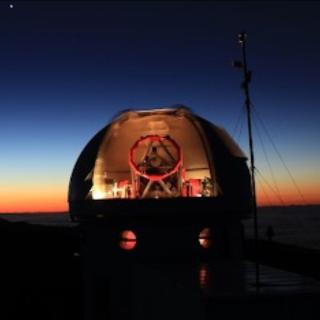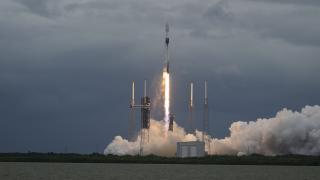It may interest you
-
 The Instituto de Astrofísica de Canarias (IAC) is hosting during this week the Second SONG Scientific Conference, which brings to an end the first decade of high level studies with this international network designed to study the interiors of the stars and the planetary systems which orbit them.Advertised on
The Instituto de Astrofísica de Canarias (IAC) is hosting during this week the Second SONG Scientific Conference, which brings to an end the first decade of high level studies with this international network designed to study the interiors of the stars and the planetary systems which orbit them.Advertised on -
 Using observations made with the James Webb Space Telescope (JWST), an international scientific team, in which the Instituto de Astrofísica de Canarias (IAC) participates, has confirmed variations in morning and evening atmosphere of the exoplanet WASP-39 b, about 700 light-years away from Earth. The research has revealed differences in temperature and atmospheric pressure, as well as indications of different cloudiness and winds that could reach thousands of miles per hour. The results are published in Nature. WASP-39 b, a giant planet with a diameter 1.3 times greater than Jupiter, butAdvertised on
Using observations made with the James Webb Space Telescope (JWST), an international scientific team, in which the Instituto de Astrofísica de Canarias (IAC) participates, has confirmed variations in morning and evening atmosphere of the exoplanet WASP-39 b, about 700 light-years away from Earth. The research has revealed differences in temperature and atmospheric pressure, as well as indications of different cloudiness and winds that could reach thousands of miles per hour. The results are published in Nature. WASP-39 b, a giant planet with a diameter 1.3 times greater than Jupiter, butAdvertised on -
 Researchers Julia de León and Javier Licandro of the Instituto de Astrofísica de Canarias (IAC) are participating in the Hera mission of the European Space Agency (ESA) , successfully launched from Cape Canaveral, Florida (USA) on 7th October at 14:52 UTC. This is the first European mission for planetary defence which together with NASA’s DART (Double Asteroid redirection Test) will study the effects of a technique for diverting asteroids called “ kinetic impactor”. The DART probe crashed into the smaller ( Dimorphos) of the two asteroids which form the binary system Didymos, on SeptemberAdvertised on
Researchers Julia de León and Javier Licandro of the Instituto de Astrofísica de Canarias (IAC) are participating in the Hera mission of the European Space Agency (ESA) , successfully launched from Cape Canaveral, Florida (USA) on 7th October at 14:52 UTC. This is the first European mission for planetary defence which together with NASA’s DART (Double Asteroid redirection Test) will study the effects of a technique for diverting asteroids called “ kinetic impactor”. The DART probe crashed into the smaller ( Dimorphos) of the two asteroids which form the binary system Didymos, on SeptemberAdvertised on
